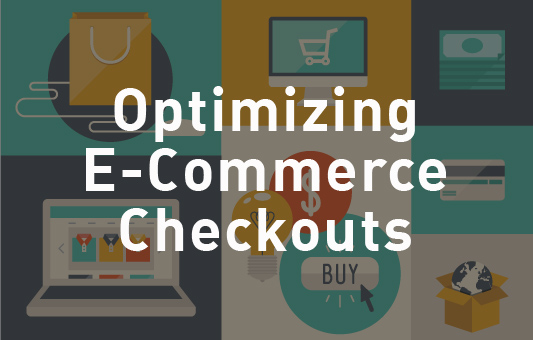
Customer conversion is a multistep process that smart business owners pay a great deal of attention to. You monitor your marketing analytics carefully and know where people come from, how they navigate your page and how they get to conversion. So you need to treat your checkout process the same way: How does your customer get through the process and how can you get them to hit that “confirm order” button?
All the points along your checkout process either influence conversion, or they influence shopping cart abandonment. Here are a few thoughts to help you keep those carts rolling through checkout.
First, track it.
We can’t say it enough: Get the data. Benchmark your checkout rate before you implement any changes, so you’ll know where the problems lie and which fixes are working.
Google Analytics has flexible tracking tools available for monitoring your conversion funnel to identify problems in your site’s ecommerce functionality. You can set goals for multiple points along the purchase process and track your site’s progress—conversions, completions, sales and revenue—fairly easily.
Make checkout quick and painless.
Your checkout process should be as close to a simple in-store purchase as you can possibly make it. Time spent in the process = time for a customer to change her mind.
- Experts suggest no more than five to eight steps
- Your process must be linear, with no distracting steps within steps like setting up a preferred shipping address for that first purchase or signing up for special offers. Those can come later.
- Make instructions simple and clear, and visually reinforce them with large buttons and consistent fonts and colors.
- Limit the typing required to complete the order. Remember, some 65% of online purchases are initiated on a smartphone or other mobile devices; nobody wants to type that much on their mobile. Some browsers like Chrome help you out by autofilling name, email and address fields.
Don’t ask for too much information.
What do you really need to know to complete the order?
- What they’re buying.
- Where they want it shipped.
- Contact info in case there’s a problem.
- How they’re paying for it.
That’s pretty much all the info a customer wants to give you. Do they really have to create an account name and password?
While customer data is important for your future marketing purposes, you need to earn it. Ask for too much too soon, and you risk scaring off a customer before she finishes checking out. Instead, please that new customer with an outstanding product and a smooth buying experience, and then you can invite her to engage by creating an account, liking you on Facebook or reviewing your product.
You can certainly offer the option for users to create an account, but make it voluntary, explain why it benefits them, and keep it from distracting from the process flow.
Offer a variety of payment methods.
Go beyond Visa, MasterCard and Discover and add a secure online payment transaction service, like PayPal, Payments by Amazon or Google Wallet. These let customers make their purchase without sharing financial information with vendors and sites they’re not fully familiar with, and they offer buyer and seller protection. Consumers know and trust services like PayPal, which processes billions of dollars of online sales every day.
Check out the different payment services to see which one will work best for you—their rates and fees differ, and some collect additional information on your customers. (Here’s one handy comparison chart.)
Be sure to make it very clear on your checkout pages that your site is secure: include those logos. For many consumers, buying online hinges on trust: if their gut tells them they can’t trust you with their personal and financial information, they’ll bail.

Put the customer back in customer service.
Chances are you’re selling something your customers can get somewhere else. You can compete on price and selection, but what keeps customers from dumping their carts and going to your competitor is customer service.
Customers naturally have questions when considering a purchase, and if they can’t get answers—or if they don’t think you care about their questions—they won’t hit the “buy” button.
- Offer a live chat to personally engage customers and help them through the process.
- Make your “contact us” button easy to find—and make sure it gives your customers immediate help, not a robotic auto email promising to get back to them next Thursday.
- If staffing your chat or contact center is a concern, demonstration videos and FAQs about your products also tell customers that you’ve considered their needs and anticipated their questions.
With these suggestions in mind, you can make your checkout process shorter, smoother and more rewarding for customers—and for your business.
For more ideas on optimizing your particular process, contact Marketing Torque today.


